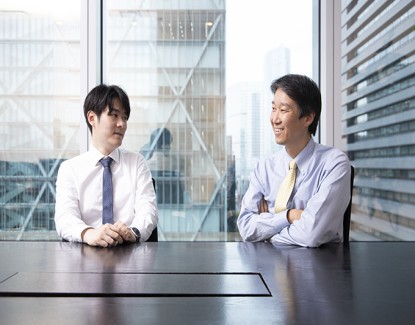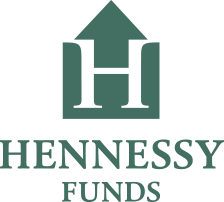Market Commentary and Fund Performance
The Portfolio Managers of Tokyo-based SPARX Asset Management Co., Ltd., sub-advisor to the Hennessy Japan Fund, share their insights on the Japanese market and Fund performance.
-
 Masakazu Takeda, CFA, CMAPortfolio Manager
Masakazu Takeda, CFA, CMAPortfolio Manager
Performance data quoted represents past performance; past performance does not guarantee future results. The investment return and principal value of an investment will fluctuate so that an investor’s shares, when redeemed, may be worth more or less than their original cost. Current performance of the fund may be lower or higher than the performance quoted. Performance data current to the most recent month end, and standardized performance can be obtained by viewing the fact sheet or by clicking here.
Fund Performance Review
In March 2025, Japan’s representative stock index, the TOPIX, rose by 0.99% compared to the previous month’s end. Throughout the month, Japan’s stock market saw significant fluctuations as investor sentiment was unsettled by concerns over U.S. tariff policies and geopolitical tensions.
In early March, concerns about a global economic slowdown emerged as U.S. President Donald Trump implemented successive tariff measures, leading to a sharp decline in Japan’s stock market, particularly among cyclical stocks.
In mid-March, several factors contributed to a shift in Japan’s stock market dynamics. Bank of Japan’s (BOJ) Governor Kazuo Ueda suggested the continuation of rate hikes, the Philadelphia Semiconductor Index (SOX) saw a significant surge, and geopolitical risks surrounding Ukraine eased. Additionally, Warren Buffett’s Berkshire Hathaway increased its stakes in major Japanese trading companies, which was well-received by the market. These developments led to strong buying interest in value stocks. While the Nikkei 225 remained weak, the TOPIX showed resilience, and the NT Ratio (Nikkei/TOPIX) fell to its lowest level in five years.
In late March, U.S. President Donald Trump announced a 25% tariff on imported automobiles, leading to significant sell-offs in auto and semiconductor stocks. This announcement heightened risk-averse sentiment in the market. Additionally, growing concerns over “stagflation” in the U.S.—a combination of rising prices and economic stagnation—further fueled fears, causing major stock indices to decline sharply. As a result, Japan’s stock market experienced widespread losses, with the Nikkei 225 ending the month at its lowest level in approximately seven and a half months.
This month, the Fund returned -0.89% (HJPIX), underperforming its benchmark, the Russell/Nomura Total Market™ Index, which returned 0.94%.
The month’s positive performer among the Global Industry Classification Standard (GICS) sectors included shares of Financials, Consumer Staples, and Consumer Discretionary, while Information Technology, Industrials, and Communication Services detracted from the Fund’s performance.
Among the best performers were our investments in Tokio Marine Holdings, Inc., Japan’s largest general insurance company with arguably the best underwriting track record and successful overseas expansion, Mitsubishi UFJ Financial Group, Inc., one of Japan’s largest financial groups and Mitsubishi Corporation, the largest trading company in Japan.
As for the laggards, Recruit Holdings Co., Ltd., Japan’s unique human resources and media company and the owner of U.S.-based online job advertisement subsidiary “Indeed,” Renesas Electronics Corporation, Japan’s largest semiconductor maker specializing in MCUs and analog chips and Hitachi, Ltd., one of Japan’s oldest electric equipment & heavy industrial machinery manufacturers.
A small analyst meeting was held this month with ORIX Chairman and CEO, Mr. Inoue, and the newly appointed President and COO, Mr. Takahashi.
We did not participate in this event as it was held exclusively for sell-side analysts.
According to reports from the brokerage firms that attended, the main points of the company’s remarks were as follows.
Financial Goals and Shareholder Returns:
The company has committed to achieving a return on equity (ROE) of 11% in the next three years and would like to target 12% in five years. At the same time, the company aims for an earnings per share (EPS) growth of 10% or more. To achieve this, management will also utilize share buybacks as necessary.
Business Strategy:
ORIX will prioritize two key areas: “Business Solutions” and “Alternative Investments and Operations.” In the former, the company will leverage its existing corporate customer network to provide solutions to clients regarding business succession and property-related issues, whereby increasing fee income through mergers & acquisition services, real estate transactions, etc.
Investment Management and Risk Control:
To enhance decision-making across the entire investment lifecycle—from execution to exit—ORIX plans to further develop its portfolio management and risk management systems.
The company’s emphasis on alternative assets aligns with the themes discussed during our one-on-one meeting with Mr. Inoue last November. A key issue we highlighted at the time was how ORIX could expand “permanent capital” or long-term (and in some cases, ultra-long-term) assets under management that are less prone to redemption risks. It seems the company remains focused on addressing this challenge.
How to think about the valuation of ORIX stock
Before this small meeting, an interview with Chairman Inoue was published in Nikkei in January of this year. In the interview,1 he stated that going forward, ORIX will “focus on generating returns by recycling assets rather than increasing them.” This strategic shift implies that the valuation framework for ORIX shares will gradually evolve. Theoretically, the emphasis should shift from the current “net asset value (NAV) approach (or price to book ratio (P/B) adjusted for unrealized assets)” to a “price to earnings ratio (P/E) based on future earnings.”
The reason for this transition lies in the company’s shift away from a principal investments model, where investments are held on its balance sheet, toward a structure that generates fee income by utilizing external investors’ funds (combined with its capital). This “asset management shift” fundamentally changes the source and quality of the company’s earnings, which could increasingly be driven by management fees rather than investment gains.
If ORIX can expand its base of permanent capital, funds that are less prone to redemption risk, or other long-term assets under management, and secure stable and highly profitable fee-related earnings (FRE), then this would allow the market to form more reliable profit outlooks for the company, which in turn could lower the risk premium on ORIX shares, a positive development for investors.
As the share of fee-based business grows, we believe it will make more sense to value ORIX stock based on P/E. In such a scenario, it would not be surprising to see the P/E of ORIX shares rise from its current level of below 10x to over 20x. Indeed, many of the world’s leading publicly traded alternative investment firms—such as KKR, Apollo, Brookfield, and Blackstone—are valued this way.
We believe that ORIX shares are currently significantly undervalued. As mentioned in our December 2024 commentary, Mr. Inoue has also repeatedly stated, “a P/B of 1.5x would be equivalent to a P/B of 1x when considering unrealized profits.” If this statement holds, then even without factoring in future growth potential, the company’s stock could be worth much more than its current price.
The “asset management shift” that ORIX is pursuing will take several years to materialize. In the meantime, as a principal investments-focused company, ORIX should make the effort to communicate to the market how much its net assets, including unrealized gains, are increasing each fiscal period. As we noted in our December 2024 commentary, relying on a misleading explanation of ROE risks creating misunderstandings, and we maintain our stance that this should be improved.
In the medium to long term, if ORIX successfully transitions to being valued on a P/E basis, its shares have the potential for further significant upside beyond its per-share NAV. How to effectively convey this shift in market communication with stakeholders will also be a key challenge moving forward.
Furthermore, their shareholder return policy should not be overlooked. As of May 7, 2025, the current dividend yield exceeds 4% compared to Japan’s average dividend yield of around 2.3% as measured by the TSE Prime Market. The firm’s Investor Relations (IR) materials state that “39% of net income or the previous year’s dividend, whichever is higher.” This is effectively a progressive dividend policy, where the dividend is expected to be higher than last year’s or at least to remain flat. Additionally, management continuously carries out a share buyback program (approx. 50bn yen ($349.8mn) in each of the last five fiscal years). The company already completed the program for the fiscal year ending in March 2025 and cancelled all treasury stock exceeding 2% of total shares outstanding as of December 2024.2 This means the total capital return yield (dividend and buyback) of nearly 6%.
Particularly in situations where the stock is undervalued, continuous share buybacks and dividend increases can be powerful tools. In share buybacks, the more undervalued the stock is, the more shares can be bought, resulting in higher EPS. Especially in the case of ORIX whose share price is at P/B less than 1x, these actions also increase the book value per share (BPS), which means the stock’s P/B will fall further (the valuation gets even cheaper), all else equal. We believe sustainable shareholder returns tend to be under-appreciated by the market, allowing shareholders to quietly generate solid returns.
What underpins these shareholder return policies is its earnings growth. In its Q3 FY2025 results announced in February, the segment profit totalled 427.5bn yen ($3.0bn) (+16% yoy), and net income grew to 271.8bn yen ($1.9bn) (+24% yoy) for the first nine months ended in December 2024, achieving all-time highs in both measures. These achievements were made possible thanks to the firm’s portfolio of crown jewel investment assets, operating businesses, and operating assets, which include Kansai International Airport (the only international gateway in the Kansai area), one of the world’s largest aircraft fleet (the wholly-owned ORIX Aviation Systems and affiliate Avolon Holdings), hotel properties and operations (ORIX Hotels & Resorts), renewable energy businesses (Elawan Energy, Greenko Energy Holdings, Ormat Technologies), life insurance (ORIX Life), bank lending (ORIX Bank), leasing assets (ORIX Auto, ORIX Rentec), asset management franchises (Robeco, Boston Partners Global Investors, etc.), private credit (NXT Capital Group), and various private equity investments (Toshiba, DHC, Santoku Shipping, etc).
To summarize, the valuation appeal of ORIX shares can be distilled into three main points:
1. Substantial unrealized gains make the stock compelling on a NAV basis
The current P/B based on reported BPS stands at 0.9x. However, with a large portfolio of investment assets that hold significant unrealized gains, ORIX’s current stock price appears even cheaper, effectively trading well below a P/B of 1.0x. Even without factoring in future growth, this implies a theoretical upside potential of over 50% (this “hidden” value could be eventually realized as management exits from these investments over time). Given that the company’s “effective” ROE were 12.4% and 14.6% in FY3/2023 and FY3/2024, respectively as opposed to the company’s self-reported ROE of below 10%, there is scope for significant re-rating of P/B.
2. Asset-light/fee-based business model transition
If ORIX successfully transitions to an asset-light/fee-based earnings model, the equity market is likely to start valuing the company based on P/E, which is currently less than 9x This should result in a significantly higher valuation compared to current levels.
3. Robust shareholder return policy as a margin of safety
With attractive dividend yields and sensible share repurchases conducted at sub-BPS share prices, the stock’s downside risk can be greatly mitigated.
Finally, as ORIX achieves the “recycling assets to generate returns” strategy championed by Mr. Inoue, the company will require less shareholders’ capital. If this is the case, ORIX will no longer need to maintain large financial buffers to cover potential losses on its directly held investment assets. Consequently, we believe ORIX will be better positioned to execute share buybacks. Only at this stage will the company’s ROE see a meaningful improvement.
Click here for a full listing of Holdings.
- In this article:
- Japan
- Japan Fund
1 https://asia.nikkei.com/Editor-s-Picks/Interview/Japan-s-Orix-to-focus-on-optimizing-its-portfolio-over-scale-CEO.
2 https://www.orix.co.jp/grp/en/pdf/ir/library/presentation/Presentation_2025_3QE.pdf.
You might also like
-
 Portfolio Perspective
Portfolio Perspective
Japan Small Cap FundA Focus on Japanese Small-Caps Making Big Corporate Improvements
 Takenari Okumura, CMAPortfolio Manager
Takenari Okumura, CMAPortfolio Manager Tadahiro Fujimura, CFA, CMAPortfolio ManagerRead the Commentary
Tadahiro Fujimura, CFA, CMAPortfolio ManagerRead the CommentaryThe Portfolio Managers discuss their view of the Japanese small-cap corporate landscape amid many shifting factors, including a new Prime Minister, finalized tariff situation, currency volatility, and attractive valuation environment.
-
 Portfolio Perspective
Portfolio Perspective
Japan FundCompelling Japanese Opportunities Amid Attractive Valuations
 Masakazu Takeda, CFA, CMAPortfolio Manager
Masakazu Takeda, CFA, CMAPortfolio Manager Angus Lee, CFAPortfolio ManagerRead the Commentary
Angus Lee, CFAPortfolio ManagerRead the CommentaryThe Hennessy Japan Fund Portfolio Managers highlight the effect of the new Prime Minister on the economy and market and how holdings were affected by the final trade agreement. They also discuss currency volatility, valuations, and the most compelling opportunities as we end 2025.
-
 Investment Idea
Investment IdeaCompelling Valuations in Japan
 Masakazu Takeda, CFA, CMAPortfolio Manager
Masakazu Takeda, CFA, CMAPortfolio Manager Angus Lee, CFAPortfolio Manager
Angus Lee, CFAPortfolio Manager Tadahiro Fujimura, CFA, CMAPortfolio Manager
Tadahiro Fujimura, CFA, CMAPortfolio Manager Takenari Okumura, CMAPortfolio ManagerRead the Investment Idea
Takenari Okumura, CMAPortfolio ManagerRead the Investment IdeaJapanese equities are currently trading at compelling valuation levels compared to other developed equity markets around the world and relative to their own historical averages. We believe the Japanese market deserves a closer look.
